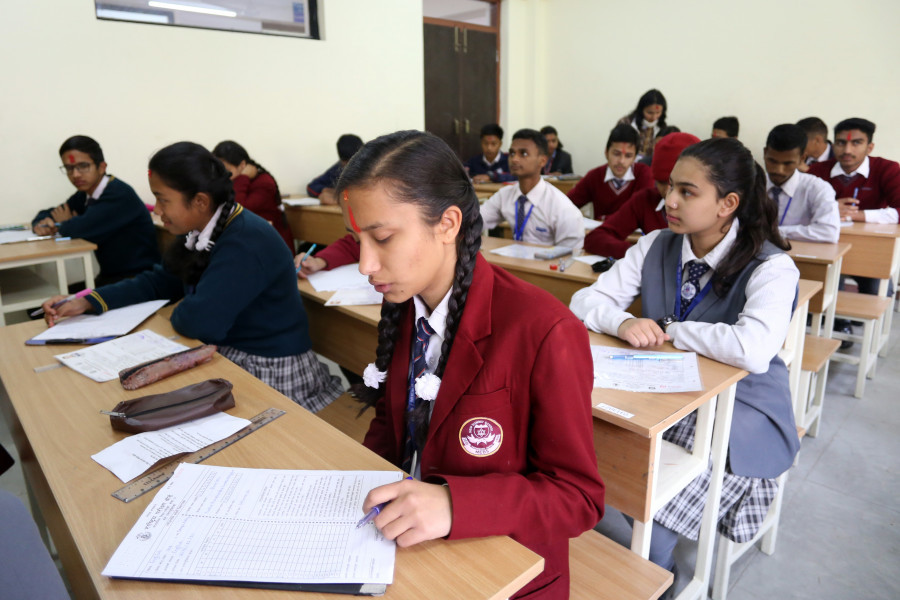National
Multilingual instruction mode in schools is better, report says
Adoption of English as a medium of instruction by schools has attracted more students but it hasn’t improved the quality of education.
Post Report
The learning achievement of students from schools with a multilingual mode of instruction is better compared to those where only one language is used as a medium of instruction.
A study report published on Wednesday questions the monolingual understanding that underpins a specific and singular medium of instruction—whether that is Nepali or English medium.
“Where monolingual practices are prioritised over multilingual ones, teachers, students and parents/families are often disadvantaged and learning is impacted,” reads one of the findings in the report.
The finding is based on a study conducted in 30 schools from 12 districts representing all seven provinces. Given the linguistic diversity of the country where more than 125 languages are spoken, the constitution recognises and promotes the value of all the languages while the government also has a policy of promoting multilingualism over monolingualism. However, that has not been reflected in practice, largely when it comes to schooling and education.
“Keeping in mind the diversity within a single province or even a community, either multilingual education or education in a child’s most familiar language is crucial,” the report said. “Multilingualism is not a problem that needs to be overcome, but rather a significant resource to be valued and promoted.”
Prem Poudel, an associate professor at Tribhuvan University who was one of the researchers, said when children are able to interact and learn in a language familiar to them, they tend to be more active participants in the class and are more engaged in their lessons. He said it was not only the students but parents, head-teachers, teachers and other stakeholders who also highlighted the fact during the study.
Against the general perception, use of English as the medium of instruction hasn’t ensured better learning. “Use of English as a medium of instruction doesn’t automatically ensure quality education,” he said, adding students fare better when the languages familiar to them are used as a medium of instruction.
As per the report, most of the parents who participated in the study reported that English was not a language through which their children were able to learn and perform at their best. Adopting English as a medium of instruction has become common among public schools as a way to attract students amid dwindling enrollments. Though it has increased the students’ flow, it hasn't improved the quality of education.
“The student enrollment in our school increased fourfold after we adopted English as an instruction medium. I can tell you it hasn't brought much change in students’ learning,” said Jyoti Thapa, a teacher from a basic public school in Putalibazar, Syangja. “In my experience, multilingual instruction, which includes English, Nepali and the children's mother tongue, is the best if we really want students to learn better.”
Creating opportunities for students to be assessed multilingually—in both writing and speaking—is a shift in practice and that would allow students the ability to fully show what they know and understand, according to the study report.
The report also recommends having a comprehensive Multilingual Education Policy in place.
“Currently, there is no coherent policy for multilingual education in Nepal and as such, the schools are operating in something of a policy vacuum,” the report said. “Within such a policy, there is a need for a clear and accessible understanding of what multilingualism is, and what this looks like in classrooms, workplaces and society more broadly. It needs to promote the value of all languages and should set clear guidelines for teachers’ training, curriculum design and assessment at all levels of education and professional development.”
The report further said, “This policy should extend to all schools across Nepal, whether community/government schools or private, and be grounded in the principle that multilingualism is a positive resource for learning rather than a barrier for learning.”




 14.12°C Kathmandu
14.12°C Kathmandu














